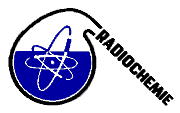Speaker
Dr
Alegria Natalia
(University of the Basque Country)
Description
From the Sun and interstellar spaces of the universe the primary cosmic radiation comes to the Earth. These cosmic rays interact with the nuclei of atmospheric constituents, producing an interaction cascade and secondary reaction and also produce a number of radioactive nuclei known as cosmogenic, 7Be between others as a result of spallation reactions.
In Bilbao (north of Spain) there is a high flow rate atmospheric sampler which belongs to the Radiological Surveillance Network of the Autonomous region of the Basque Country. Among the radionuclides present in the air aerosols 7Be is found.
The network is in operation since October 2001 and so a long record of 7Be measurements is available.
To study the behaviour of 7Be in air, the recorded values have been considered as a succession of data what is usually known as a Time Series. It is made up of 4 components: trend, cyclical component, seasonal component and irregular component.
The cyclical component is not fully developed because the studied period (2001 – 2009) is shorter than the solar cycle (eleven years period), which is the ultimate cause of that component.
A trend and seasonal components have been determined and finally an irregular component has been observed. This is caused by occasional events, such as rain, which washes 7Be out depositing it onto the ground. However, it has been found that the atmospheric concentration of 7Be is negligibly affected by rain.
Primary author
Dr
Alegria Natalia
(University of the Basque Country)
Co-authors
Dr
Herranz Margarita
(University of the Basque Country)
Dr
Idoeta Raquel
(University of the Basque Country)
Dr
Legarda Fernando
(University of the Basque Country)

